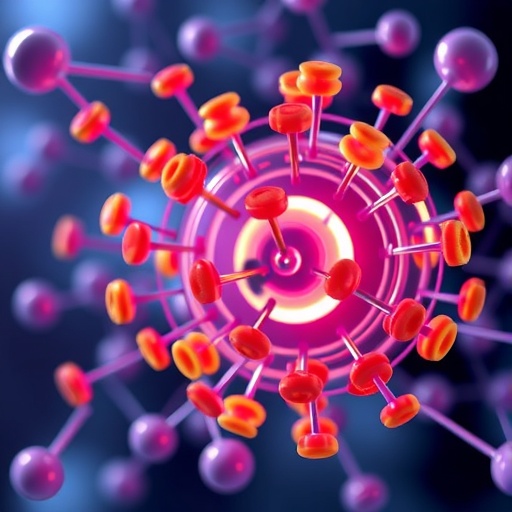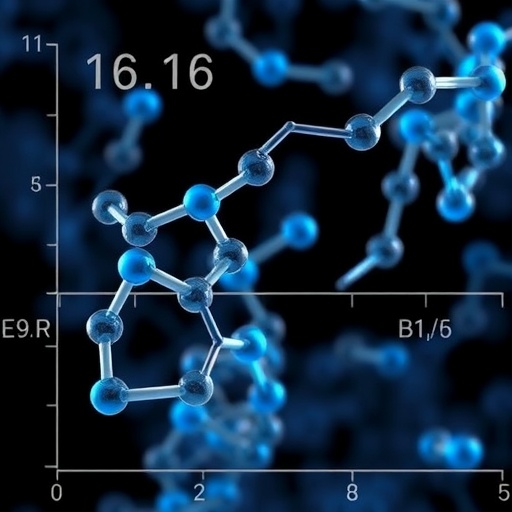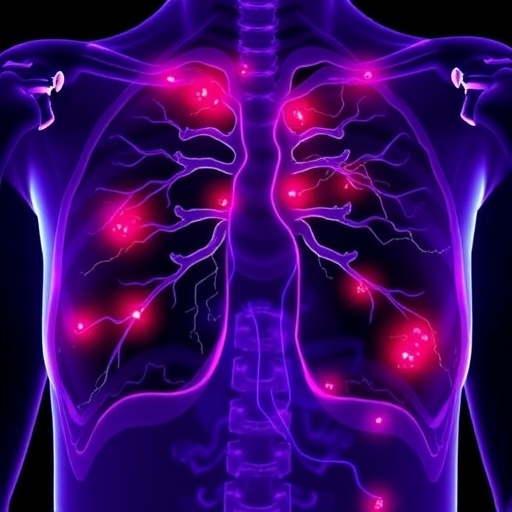In an era marked by rapid advancements in biotechnology and medicine, researchers are increasingly turning to machine learning as a tool to uncover the molecular signatures critical for precision drug design. A recent study by Sahu, Anmol, Nishad, and their colleagues sheds light on the vital roles played by key proteins including trypanothione reductase, PKC-θ, and CB1. The integration of artificial intelligence with biological data is not merely a trend; it represents the evolution of drug discovery processes into more efficient, targeted, and personalized therapies.
The significance of trypanothione reductase cannot be overstated, especially considering its role in parasite survival and metabolism. This enzyme is fundamental in maintaining the redox balance within organisms such as Trypanosoma, which cause diseases like African sleeping sickness. By employing machine learning algorithms to analyze genomic and proteomic data, researchers can identify potential inhibitors that can disrupt this metabolic pathway. This is particularly crucial given the rising drug resistance witnessed among traditional treatments. The elucidation of molecular signatures via machine learning may pave the way for the discovery of novel and potent drug candidates that could drastically improve clinical outcomes.
Research on PKC-θ highlights another dimension of importance, as this protein is pivotal in T cell signaling. In autoimmune diseases, aberrant T cell activation can lead to detrimental effects on the human body. By using advanced computational methods, scientists have been able to map out the various interactions PKC-θ engages in within cellular contexts. Through this profiling, they may unlock new therapeutic avenues for conditions like rheumatoid arthritis and multiple sclerosis where T cell dysregulation is rampant. The promise of personalized medicine is within reach as tailored therapies could be devised based on individual molecular fingerprints.
The third focal point of this study, cannabinoid receptor CB1, has generated significant interest over the years, primarily due to its implications in neuropharmacology and metabolic disorders. Understanding the binding dynamics between synthetic compounds and the CB1 receptor can facilitate the design of medications targeting conditions ranging from chronic pain to obesity. The use of machine learning allows researchers to analyze large datasets of receptor-ligand interactions, which can lead to more efficient screening of potential therapeutic agents. The objective is to streamline the process of identifying candidates that could effectively regulate this receptor’s activity.
The researchers utilized sophisticated algorithms like random forests and support vector machines to analyze biological datasets. By training these models on existing chemical libraries and biological activity data, they aimed to enhance predictive accuracy. Their results indicated that machine learning could indeed identify novel compounds with desirable properties that were previously overlooked by traditional methodologies. This methodology represents a paradigm shift in how drug discovery may be conducted in future academia and industry settings.
Another exciting avenue explored by the researchers involves the possibility of integrating multi-omics data into machine learning frameworks. This approach allows for a deeper understanding of how different molecular layers—genomic, proteomic, and metabolomic—interact harmoniously within biological systems. By fusing these data layers, the likelihood of discovering unique signatures that correlate with disease phenotypes increases substantially. It underscores a trend that may see a future where comprehensive biological portraits become the norm in understanding disease mechanisms and treatment options.
Looking ahead, the implications of these discoveries extend far beyond the immediate applications in drug design. They herald an era where Artificial Intelligence collaborates intimately with skilled researchers, aiding them in deciphering the complexities of living systems. An ecosystem where algorithms can predict molecular behavior and interactions enables researchers to iterate on their discoveries rapidly, leading to breakthroughs that could transform healthcare as we know it.
While the applicability of these methodologies is promising, the researchers caution that challenges remain. From data quality to ethical considerations surrounding AI, a balanced approach must be maintained. Regulatory frameworks and guidelines need to evolve in conjunction with technological advancements to ensure safety, efficacy, and ethical integrity. Promoting a culture of transparency among researchers, particularly in the realm of artificial intelligence in healthcare, will lay the groundwork for building trust with the public and regulatory bodies.
Increased collaboration between computational scientists and traditional biologists will also play a pivotal role. By bridging the gap between data science and biological research, a more holistic understanding of diseases will emerge. This collaboration can foster environments where interdisciplinary teams can work collectively to solve complex biological problems, making a lasting impact on healthcare solutions.
Moreover, as educational programs begin to incorporate more data science and machine learning into their curriculums, the next generation of scientists will enter the field with a robust skill set. This will drive further innovation in drug design and development, creating ripple effects that could amplify advancements across various disciplines within health sciences. The researchers’ call to action is thus not only for immediate impact but for a lasting reformation of how scientists are trained.
Collectively, these findings illuminate the vibrant future awaiting drug design aesthetics. The intricate tapestry woven from molecular signatures, machine learning, and collaborative science offers a glimpse into a world where therapies can be finely tuned to match the unique genetic and molecular characteristics of patients. With such personalized approaches, one can envision the tedious processes of drug discovery being accelerated while concurrently increasing the efficacy and safety profile of new drugs entering the market.
Ultimately, the work of Sahu and her colleagues stands as a testament to the fusion of data science with molecular biology. As they unveil the molecular signatures that may lead to breakthroughs in drug development, the community is prompted to believe that an era of precision medicine is not just a far-off dream but an impending reality. The ongoing efforts in harnessing machine learning for medicinal purposes hold granular promise—a pledge toward a future where every individual’s health is approached with unprecedented specificity and care.
As research continues to evolve and invest in these cutting-edge methodologies, the fundamental shifts in how we understand and medicate diseases promise not just to enhance patient care but to redefine the landscape of how scientists make sense of the biological world. The collaborative trajectory indicates one of immense potential; one where technology and scientific inquiry coalesce to push the boundaries of human health further than ever before.
In conclusion, the revolutionary combination of machine learning with molecular biology offers a plethora of possibilities. As researchers continue to delve deeper into the molecular realm, identifying the signatures that play pivotal roles in human health, we can anticipate an entirely new frontier in medicine. This transformation within the scientific community promises to refine drug design, improve precision health practices, and above all, celebrate the convergence of technology and biology to craft a healthier future.
Subject of Research: Machine learning insights for precision drug design focused on trypanothione reductase, PKC-θ, and CB1.
Article Title: Unveiling molecular signatures for precision drug design: machine learning insights from trypanothione reductase, PKC-θ, and CB1.
Article References: Sahu, S., Anmol, A., Nishad, T. et al. Unveiling molecular signatures for precision drug design: machine learning insights from trypanothione reductase, PKC-θ, and CB1. Mol Divers (2025). https://doi.org/10.1007/s11030-025-11287-3
Image Credits: AI Generated
DOI: 10.1007/s11030-025-11287-3
Keywords: Machine learning, precision medicine, drug discovery, trypanothione reductase, PKC-θ, CB1, molecular signatures.
Tags: artificial intelligence in biotechnologygenomic data analysis for drug designmachine learning in drug designmolecular signatures in drug discoverynovel drug candidates discoveryovercoming drug resistance in treatmentspersonalized medicine advancementsPKC-θ role in T cell signalingprecision medicine with AIproteomic data in precision therapeuticstargeted therapies for diseasetrypanothione reductase inhibitors





